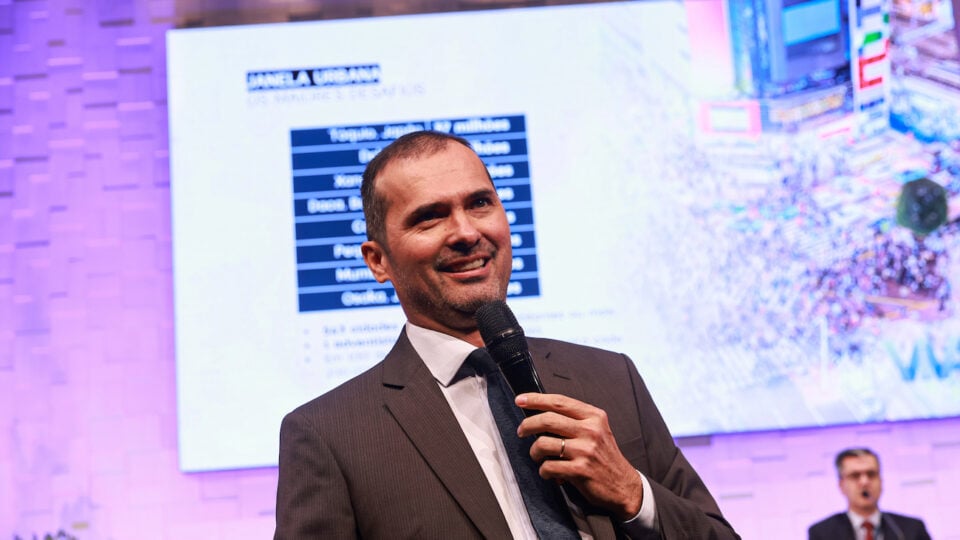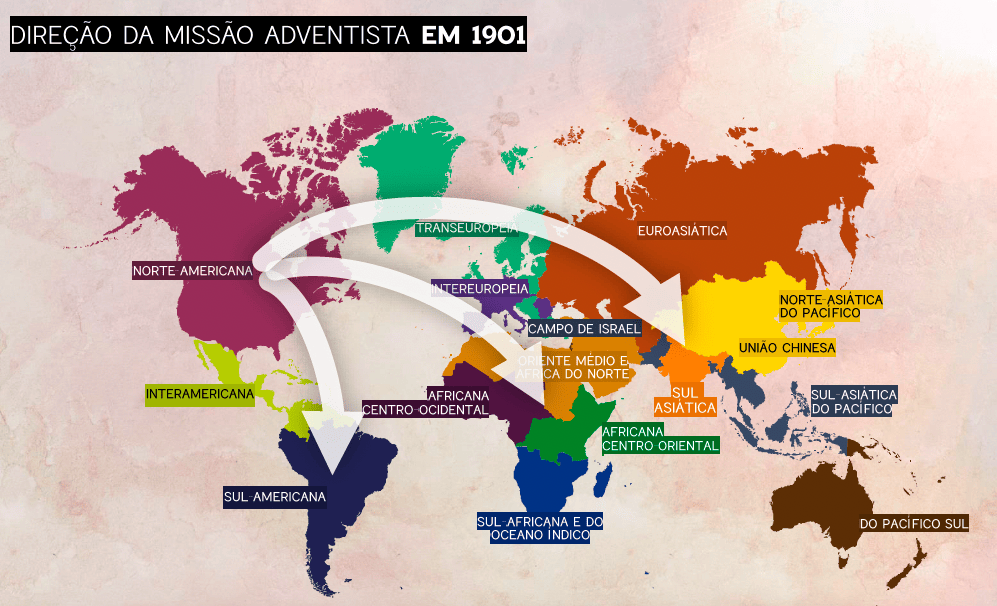
A recent report by the executive secretary of the South American Division (SAD) of the Seventh-day Adventist Church highlighted a significant difference between the present time and previous decades. During the regional executive board sessions, SAD executive secretary Edward Heidinger displayed the historical evolution of Seventh-day Adventist missions around the world and how current changes are impacting the church’s mission reach.
“In South America, Adventism was spread by foreign missionaries,” Heidinger said. “Now, missionaries from South America are giving back to the mission field in several overseas countries.”
The concern for Adventist missionary expansion goes back to the early days of the organization. Shortly after the organization of the General Conference in 1863, the first foreign mission was established in the United States. By 1874, John Nevis Andrews had been appointed as the first official Adventist missionary in Europe (specifically, in Switzerland).
South America, however, didn’t seem to get as much attention. A November 1889 General Conference Session bulletin was the starting point for a closer look at Adventist outreach in South America. The document recommended that worldwide donations from the Sabbath School of the last six months of 1890 be directed toward beginning the Adventist work in South America. The amount raised at the time was US$4,235.95 (equivalent to US$146,668 today).
In The Home Missionary, William White, Ellen White’s son, wrote about young people from various places across the U.S. who were “ready to consecrate their lives to the work of carrying the message to South America.” A year later, a General Conference Session bulletin called the South American subcontinent “a neglected field,” highlighting the missionary potential of the region.
Heidinger reminded board members of a May 29, 1891, vote taken by the General Conference Committee on Foreign Missions. It was recorded that the Adventist Church would send Elwin Snyder to distribute literature in South America. Later that year, Snyder traveled with Albert Stauffer and Clair Nowlin to Argentina.
The arrival of the missionaries in South America met the needs of people who already knew the Adventist message, Heidinger explained. Most of them were people of German origin who kept the Sabbath and had contacted Adventist leaders, asking for a pastor to visit them.
In 1894, it was voted to send Frank Westphal to Argentina to engage in direct mission with the believers there. When he arrived, Westphal met Geörg Riffel, a Swiss Adventist convert. Riffel had originally moved to Argentina in 1880, but had later moved to Kansas, United States, and was converted to Adventism there. He later returned to Argentina in 1890 as a self-supporting missionary. His service made an important contribution to spreading the gospel in South America. On September 9, 1894, Westphal organized the first Adventist congregation in South America in Crespo, Argentina.


The SAD Adventist Volunteer Service (AVS) shows ongoing growth, Heidinger said. According to AVS data, the region sent 166 volunteers in 2021. Between 1999 and 2021, 910 volunteers were sent from the SAD to countries outside its territory. In the same period, the number of people sent to do outreach and support evangelism in SAD countries other than the volunteer’s native homeland also experienced a sharp increase, he reported.
Currently, two foreign families are serving in the SAD territory, and 70 SAD families are serving as missionaries in other regions of the world. These are missionaries specifically funded by the Adventist Church organization. Overall, 351 families are serving the church as paid missionaries around the world. According to the number of sponsored missionary families, the SAD is the region that sends the largest number of missionaries after the North American Division.
At the close of his presentation, Heidinger listed three major world areas that represent an ongoing challenge to evangelism, including the 10/40 Window, the region where most people live but Christianity is a minority.
Heidinger also mentioned the Post-Christian Window, which reflects the diminishing footprint of Christianity in regions such as Europe, the United States, Canada, Australia, and New Zealand. There is also an increase in immigrant membership and high rates of members leaving their churches, especially among the youth.
Finally, Heidinger referenced the Urban Window, or those 543 cities around the world with a population of at least one million. Among them, the biggest challenges are megalopolises such as the urban areas in Tokyo (population, 37 million), Delhi (33 million), Shanghai (28 million), and Dhaka (23 million).
“These still present enormous challenges to Adventist evangelism,” he said.
The original version of this story was posted on the South American Division Portuguese-language news site.